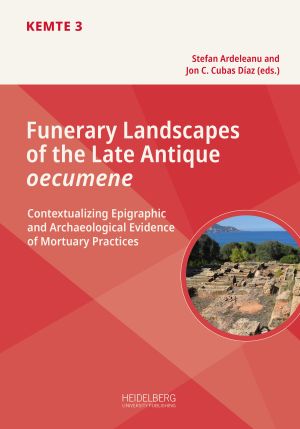Zitationsvorschlag
Lizenz (Kapitel)

Dieses Werk steht unter der Lizenz Creative Commons Namensnennung - Weitergabe unter gleichen Bedingungen 4.0 International.
Identifier (Buch)
Veröffentlicht
Die römischen Katakomben
Überlegungen zu Besitzverhältnissen, zur räumlichen Nutzung und zur Grabtypologie anhand der Katakomben Domitilla, SS. Marcellino e Pietro
Abstract This contribution about the funerary landscapes of Rome’s catacombs seeks to introduce the reader to some general characteristics of the catacombs, and to draw attention to the archaeological framework in which inscriptions were embedded in this particular type of funerary monuments. The paper will discuss the juridical and economic preconditions that led to the development of the funerary system of catacombs. Who were the owners of the catacombs? Who owned the tombs within the catacombs, and how were they purchased? How was tomb ownership articulated (or not articulated)? In order to answer these questions this contribution will first address general issues concerning ownership in the Roman catacombs (plots, funerary spaces, tombs), use of space within sepulchral areas and different burial types. Depending on certain local preconditions in a given catacomb, such as the quality of the tufa and the different working traditions of the fossores (gravediggers), it is possible to identify archaeological evidence for several hardly known characteristics of funerary practices within the catacombs. On the one hand, the comparison of certain catacombs allows us to trace some general developments in the evolution from early, small-scaled complexes of the 3rd c. AD to huge necropoleis of the 4th c. AD. On the other hand, significant differences can be observed between coemeteria predominantly used by Christians and those predominantly used by Jews. The examples discussed in this contribution include the Christian catacombs of Domitilla and SS. Marcellino e Pietro, as well as the Jewish catacomb of Vigna Randanini. The paper will focus on the characterization of these catacombs from an explicitly archaeological perspective, which includes the positioning and materiality of funerary inscriptions, largely leaving their content aside.
Keywords Roman catacombs, tomb typology, ownership of tombs, funerary plots, collective tombs, fossores, collective necropoleis






